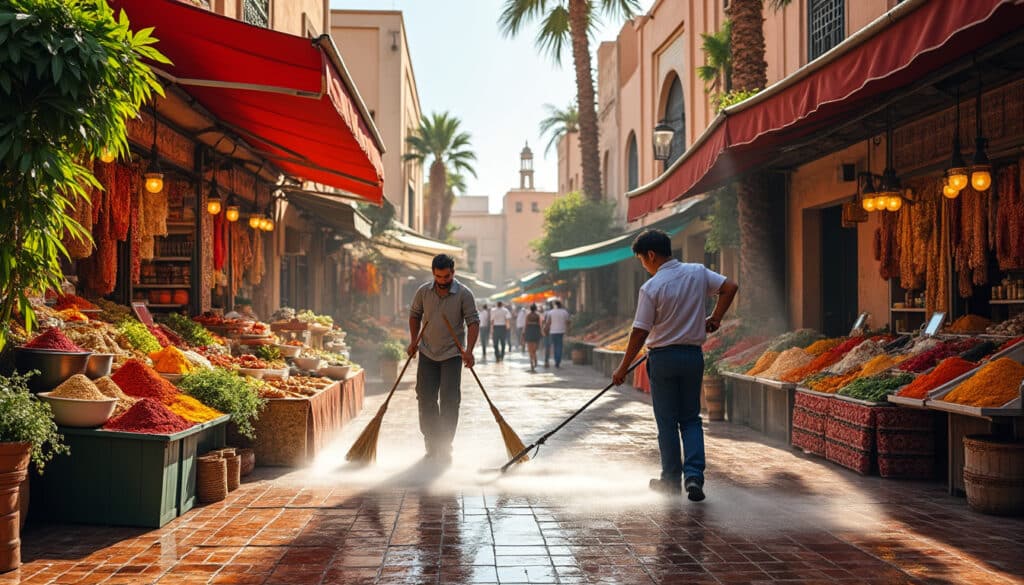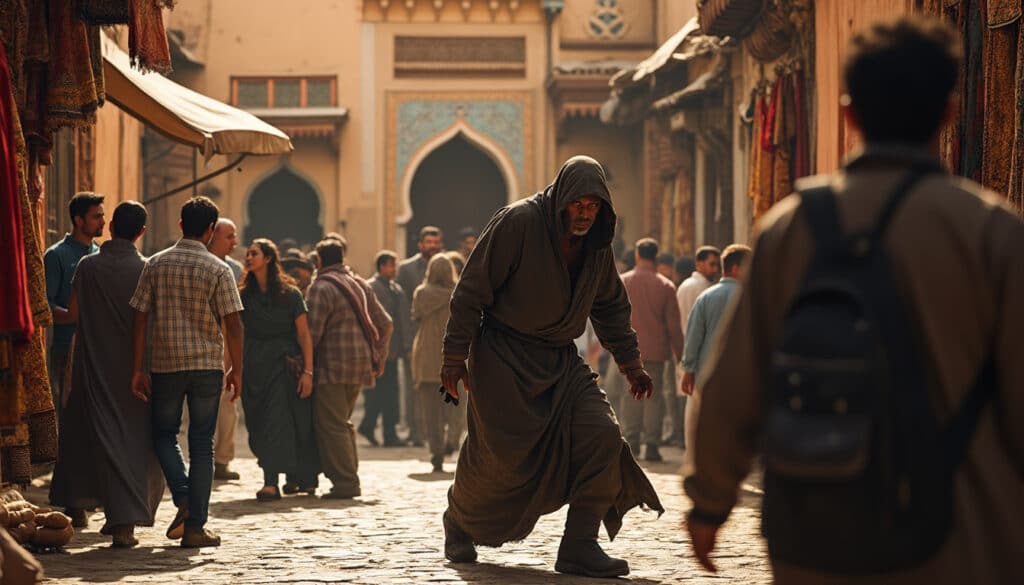In the vibrant and culturally rich city of Marrakesh, recent years have witnessed a surge in protests and social unrest as citizens advocate for various reforms and express dissatisfaction with governmental actions. From demands for political reform to calls for human rights, the streets of Marrakesh have become a stage for a myriad of voices seeking change. In this context, it’s crucial to understand the causes, manifestations, and impacts of these protests. While each movement has its unique focus and characteristics, they collectively highlight a broader dialogue on governance, social justice, and economic challenges in Morocco and beyond.
The Roots of Social Unrest in Marrakesh
The roots of social unrest in Marrakesh are deep and multifaceted, stemming from a complex interplay of political, social, and economic factors. Over the past decade, Morocco has been grappling with economic inequality, high unemployment rates, and a governance system perceived by many as lacking transparency and accountability. These issues have been further exacerbated by the global economic challenges posed by the COVID-19 pandemic and subsequent economic slowdowns.
Politically, Morocco’s monarchy has faced pressure from citizens demanding more democratic governance and a reduction in the powers held by King Mohammed VI. Activists have been calling for constitutional reforms that would ensure greater political participation and accountability. The unrest in Marrakesh is part of a broader wave of protests across North Africa and the Middle East, often referred to as the “Arab Spring 2.0,” where citizens are expressing a renewed desire for democratic reforms.
Socially, there is a growing awareness and mobilization around human rights issues. Organizations such as Human Rights Watch and Amnesty International have been instrumental in highlighting cases of governmental overreach and advocating for the rights of protesters. Moreover, climate change and environmental degradation have added another layer of complexity, with groups like Greenpeace and the Sierra Club emphasizing the need for sustainable development practices.
| Cause of Unrest | Details | Example |
|---|---|---|
| Economic Inequality | High levels of poverty and unemployment. | ✋ Protests demanding job creation. |
| Political Reform | Demand for reduced powers of monarchy. | 📢 Rallies for constitutional changes. |
| Human Rights | Calls for greater freedoms and protections. | 🕊️ Advocacy by NGOs. |
| Environmental Concerns | Impact of climate change and pollution. | 🌿 Campaigns by environmentalists. |
These varied causes show how the protests in Marrakesh are part of complex and interlinked socio-political dynamics that reflect broader national and regional issues.

Marrakesh Protests: Key Movements and Leaders
Understanding the protests in Marrakesh necessitates an examination of the key movements and figures who have shaped these actions. Prominent among them are youth-led movements advocating for political and social change. These groups have utilized social media platforms to organize, communicate, and galvanize support, often drawing attention to local issues that resonate on a national scale.
One such influential movement is the call for educational reform. Teachers and students have taken to the streets to voice their dissatisfaction with the current educational system, which they argue does not meet the demands of the modern job market. This movement gained momentum in response to the government’s educational policies perceived as outdated and ineffectual.
Another significant movement is the demand for better healthcare services. The healthcare sector in Morocco has struggled with underfunding, inadequate infrastructure, and a shortage of medical personnel. Protests have highlighted these deficiencies, with activists urging the government to invest in the healthcare system to ensure equitable access to quality care.
These movements are not leaderless. Figures such as grassroots activists, human rights campaigners, and civic leaders have played pivotal roles. Their leadership has been crucial in articulating the demands of the protesters and negotiating with authorities to seek peaceful resolutions. Notable supporters include international organizations like Oxfam and the International Crisis Group, which have provided platforms for these voices on the global stage.
- 👨🏫 Educational Reform Movement: Initiated by teachers and students seeking updated curricula.
- 🏥 Healthcare Advocates: Campaigns for improved healthcare infrastructure and accessibility.
- 📱 Youth Activists: Utilizing digital tools for organizing and advocacy.
The leadership and organization within these movements have drawn not only domestic but also international attention, positioning Marrakesh as a focal point in the conversation about social change in Morocco.
Government Response to Unrest in Marrakesh
The Moroccan government’s response to the unrest in Marrakesh has been a combination of dialogue and repression. On one hand, there have been efforts to engage with protesters through established political channels. The government has initiated several rounds of discussions with civic leaders and representatives from various protest movements to address grievances and find common ground.
Concurrently, there have been accusations of heavy-handedness in dealing with protests, particularly regarding the security forces’ use of force to disperse gatherings. Reports from organizations like Amnesty International and Human Rights Watch have highlighted these concerns, calling for an investigation into the conduct of law enforcement personnel during protests.
Modern technology has played a significant role in shaping how these events are monitored and reported. With advancements in surveillance and communication tools, the government has employed both digital and physical measures to maintain order. However, this has also led to debates around privacy and the balance between security and civil liberties.
- 🎥 Surveillance Measures: Increase in monitoring tools to oversee protests.
- 👥 Dialogue Initiatives: Government’s attempt to negotiate with leaders.
- 👮 Security Reinforcement: Use of police to manage and control protest activities.
The allocation of state resources to address these protests is reflected in the budgetary adjustments made by the Moroccan government. A significant portion has been oriented towards security apparatus rather than social programs, exacerbating tensions and criticisms.
| Government Initiative | Objective | Outcome |
|---|---|---|
| Dialogue with Activists | Address grievances through negotiation. | 🤝 Temporary pacification. |
| Deployment of Security Forces | Manage public gatherings and protests. | 🔍 Criticized for excessive force. |
| Technology and Surveillance | Monitor protest activities and coordinate responses. | 📲 Raised privacy concerns. |
The dual approach of engagement and enforcement reflects the complexities faced by Moroccan authorities in managing social upheaval while attempting to uphold public order.
International Perspective on Protests in Marrakesh
The protests in Marrakesh have not only drawn national attention but have also been a point of interest on the international stage. Several global organizations and foreign governments have weighed in, emphasizing the importance of respecting human rights and democratic principles in Morocco. This international scrutiny places pressure on Moroccan authorities to carefully navigate their domestic policies and interactions with protest movements.
The United Nations, keenly aware of Morocco’s strategic geopolitical position, has called for peaceful resolutions to the unrest while encouraging dialogue between opposing factions. Meanwhile, entities like Freedom House and the Human Rights Campaign have advocated for sustained international observation to ensure compliance with international standards of freedom and democracy.
Diplomatic relations have also been influenced by the social unrest. Countries with strong ties to Morocco, such as France and Spain, have expressed concern while maintaining a delicate balance in their diplomatic engagements. Their involvement underscores the broader implications of local unrest on international relationships and regional stability.
The response from international NGOs has been multifaceted, involving both advocacy and on-the-ground support. For instance, organizations like the International Crisis Group have published detailed reports providing insights on the socio-political climate in Morocco, offering recommendations to stakeholders on fostering a conducive environment for dialogue and reform.
- 🌐 UN Involvement: Calls for peaceful dialogue and conflict resolution.
- 🌍 Global NGOs: Monitoring and reporting on the protests and governmental actions.
- 🤝 Diplomatic Reactions: Cautiously urging reforms while maintaining alliances.
Ultimately, the international perspective on the protests in Marrakesh underscores the interconnectedness of domestic events with global politics and humanitarian standards.
The Future of Activism and Social Change in Marrakesh
As Marrakesh continues to witness dynamic shifts in its socio-political landscape, the future of activism and social change is poised on a precipice of potential transformation. The sustained pressures for reforms suggest that civic engagement will remain robust in the coming years, with youth and grassroots movements at the heart of the action.
The evolving nature of these movements indicates an increasing sophistication in how protests are organized and executed. Digital tools and platforms have become indispensable for activists, facilitating coordination, information dissemination, and international awareness. The methods of engagement are likely to expand, integrating more technological resources to reach broader audiences and stakeholders.
Looking ahead, the role of education, both formal and informal, emerges as a critical element in nurturing informed and engaged citizens. Initiatives aimed at educating the public on civic rights, responsibilities, and the importance of active participation in governance will be instrumental in shaping a more empowered society.
Moreover, sustainable social change in Marrakesh hinges on the ability of the government, civil society, and international partners to collaboratively address the root causes of unrest. This collaborative approach is necessary to ensure holistic and inclusive solutions that resonate with the needs and aspirations of all stakeholders.
- 🔗 Digital Activism: Increasing reliance on technology for advocacy.
- 📚 Civic Education: Educating the populace on governance and rights.
- 🌍 Global Partnerships: Collaboration with international allies for reform.
The future of Marrakesh as a hub of activism and social change will likely be shaped by how effectively these elements are embraced and implemented, potentially serving as a blueprint for other regions facing similar challenges.
FAQ: Protests and Social Unrest in Marrakesh
- What are the main issues driving protests in Marrakesh? 🎯
- How has the government responded to these protests? 🏛️
- What role does international influence play? 🌐

The allure of Marrakesh with its vibrant colors, bustling souks, and rich cultural tapestry can captivate the curious traveler. However, navigating this intricate Moroccan city requires more than just a sense of adventure. Ensuring safety requires informed preparation and alertness.…

Cleanliness and hygiene in Marrakesh
The vibrant city of Marrakesh, known for its bustling souks and historic landmarks, is as captivating as it is diverse. However, when navigating its lively streets and indulging in the local culture, maintaining good hygiene practices is crucial to ensure…

Pickpocketing and theft in Marrakesh
Picture this: you’re wandering through the bustling souks of Marrakesh, the air rich with the scent of spices and the vibrant colors of artisan crafts capturing your every attention. Throngs of people move alongside you, each as captivated by the…

Safety in Marrakesh for travelers from different countries
Marrakesh, a city that lures travelers with its vibrant culture, rich history, and stunning architecture, remains a popular destination for adventurers worldwide. However, while immersing yourself in the enchanting labyrinths of the souks or the captivating atmosphere of Jemaa el-Fnaa,…



